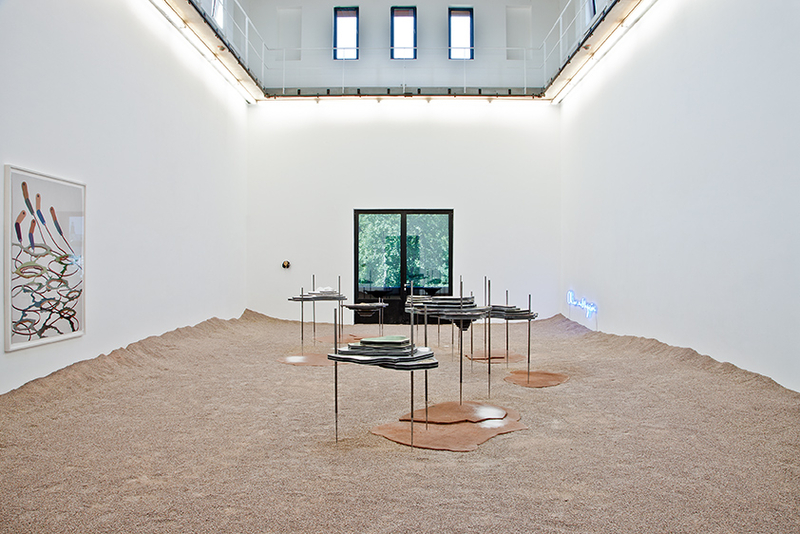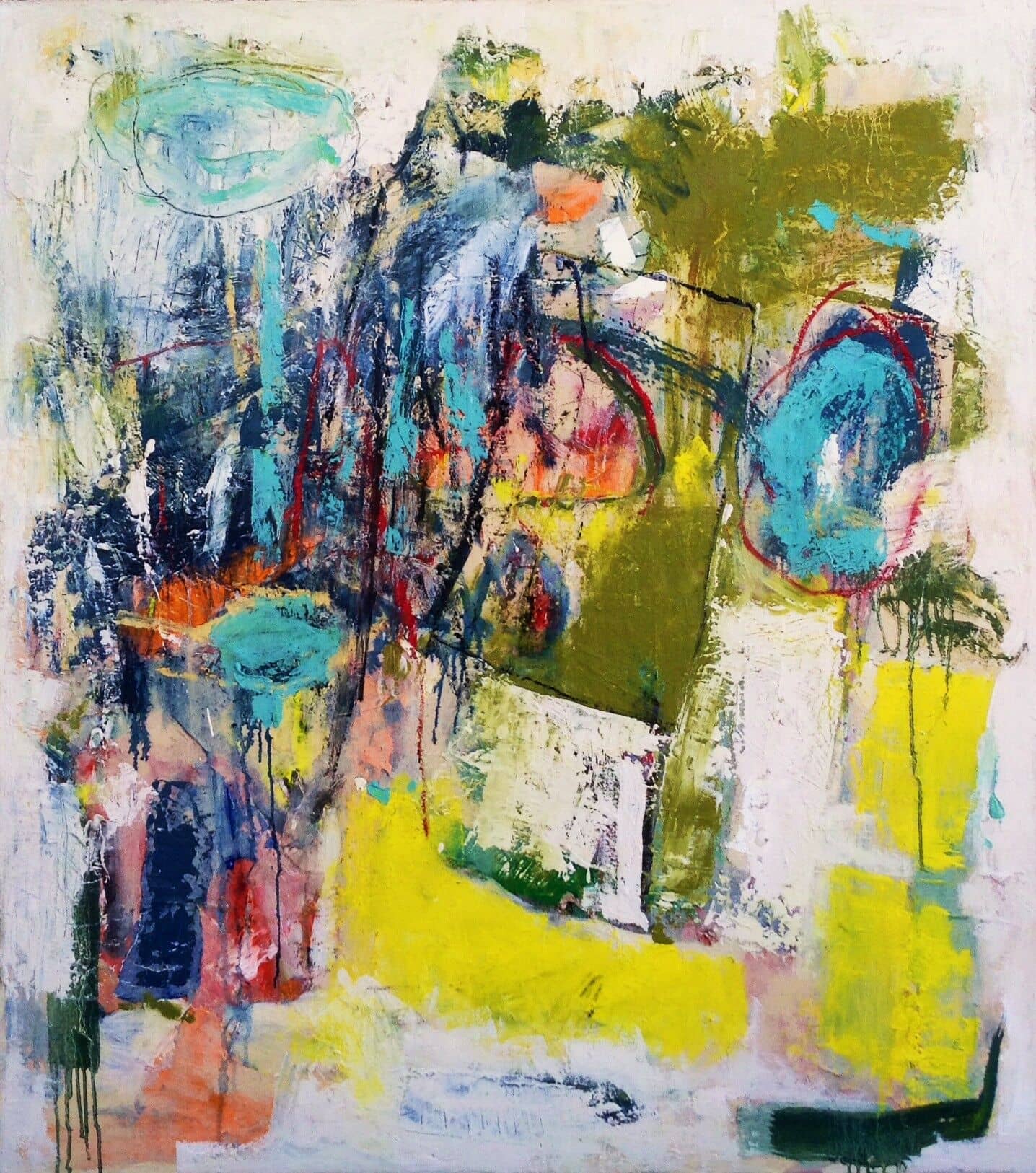With her exhibition Crumbling Through Powdery Air, Otobong Nkanga (1974, Kano, Nigeria) delves into her long-standing examination of the ambivalent connotations of shine. Nkanga scrutinises “bling”, understanding it as both a physical and cultural phenomenon. In the exhibition title, “bling” nestles within “crumbling”, and shine is understood to be unstable, diffuse and complex. The title references F. Scott Fitzgerald’s description of the valley of ashes in The Great Gatsby, the dust-filled industrial counterpart to the shimmering opulence of West Egg. Crumbling Through Powdery Air explores the layers of complexity, both historic and contemporary, involved in producing shining substances without the constraints of linear narrative.
Otobong Nkanga’s process began with a field trip to Namibia in the spring of 2015. Tracing the railway route constructed by the Otavi Mining and Railway Company (OMEG), Nkanga travelled from Swakopmund through Usakos, Omaruru, Otjiwarongo, Grootfontein, Otavi and Outjo before arriving in Tsumeb. In 1875 a prospector scouting the land described the Green Hill, an area so rich in ore minerals that it radiated the bright green colour of oxidised copper. The Green Hill would become legendary as having the highest concentration and diversity of minerals in Namibia. Yet what Nkanga came upon was a cavernous hole. The extraction of the minerals malachite and azurite had mined the hill into oblivion. The copper had been processed, transported and erected elsewhere with no tangible connection to its origins in Tsumeb. The closed mine, abandoned miners’ houses and disused railway buildings that Nkanga encountered languish – ruins and debris of places that once bustled and bristled with desire.
Taking the questions that arose in Namibia as both a catalyst and a point of considered reflection, Nkanga led a series of intensive workshops at Frankfurt’s Städelschule where she is currently a guest professor. Nkanga opened the workshop with a proposition: what would it mean to read holes not as absences, but as subterranean monuments? From here the workshop moved out into the city, conducting site-specific studies, working with the intricacies of the “monument”. As a term, “monument” encompasses sites, buildings and landscapes, as well as that which is to be memorialised, to be commemorated or attests to something never to be forgotten. New enquiries emerged: could minerals and metals embedded in architecture form monuments to their sites of origin? Can a monument articulate affect? Can a monument ever negate monumentality?
Works made in response to these sessions are presented alongside Nkanga’s new large-scale drawing and sculptures. Lines of questioning spread out from the exhibition hall up into the mezzanine and outwards onto the ruin that surrounds Portikus. A series of gestures were developed into a performance for the opening, in which the performers’ bodies directly engage with Nkanga’s sculptures.
An extensive catalogue will be published by Portikus (Frankfurt), M HKA (Antwerp) and Kadist Art Foundation (Paris/San Francisco).
This exhibition is organised in collaboration with Kadist Art Foundation supporting a Kadist Curatorial Fellow from Curatorial Studies (a master’s programme at the Staatliche Hochschule für Bildende Künste – Städelschule and Goethe University Frankfurt) to engage in research. Clare Molloy is the Kadist Curatorial Fellow 2015, she will curate an exhibition with Otobong Nkanga at Kadist’s space in Paris, which will open 26.09.2015 and be on view 27.09.2015 – 20.12.2015.
Funded by the TURN Fund of the German Federal Cultural Foundation.
Additionally supported by Städelschule Portikus e.V. and Vlaamse Overheid.











